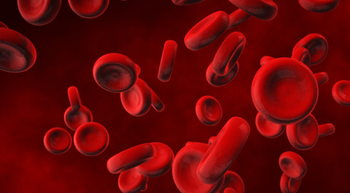
Oncology Drugs Approved by the FDA in June
Oncologic therapies approved in June included indications in genitourinary, lung, hematologic, and head and neck cancers.
The FDA approved 6 new anticancer therapies in June, including treatments for patients with lung cancer and the first approved treatment for those with head and neck squamous cell carcinoma in 6 years.
New treatments range from tyrosine kinase inhibitors (TKIs) to antibody-drug conjugates (ADCs). Below is the list of new treatments approved in oncology in June 2025.
Darolutamide for Metastatic Castration-Sensitive Prostate Cancer
The FDA approved
The efficacy of darolutamide in mHSPC was established by data from the phase 3, randomized, double-blind ARANOTE (NCT02799602) trial. Investigators randomly assigned 669 patients to receive 600 mg of darolutamide via two 300-mg tablets, twice daily with food, or placebo.2 Additionally, all patients either received standard gonadotropin-releasing androgen deprivation therapy or had previously received bilateral orchiectomy.1
Treatment with darolutamide achieved a 46% reduction in risk of radiographically confirmed progression or death. Researchers identified no statistically significant increase of overall survival at the final analysis (HR, 0.78; 95% CI, 0.58-1.05).
Patients in the darolutamide arm experienced a statistically significant improvement in radiographic progression-free survival (rPFS) vs the placebo arm and did not reach median rPFS. The placebo arm’s median rPFS was 25 months (95% CI, 19-NR; HR, 0.54; 95% CI, 0.41-0.71; P < 0.0001).
The FDA recommends a dosage of 600 mg of darolutamide taken twice orally daily with food until disease progression or unacceptable toxicity. The FDA’s announcement also notes that darolutamide’s prescribing information includes warnings for ischemic heart disease, seizure, and embryo-fetal toxicity; in addition, the safety profile of darolutamide reported at the final analysis was consistent with previous findings for darolutamide monotherapy.
Taletrectinib for ROS1+ Non–Small Cell Lung Cancer
On June 11, the FDA granted approval to the TKI
The safety and efficacy of this therapy was assessed in the phase 1 TRUST-1 (NCT04395677) and phase 2 TRUST-II (NCT04919811) open-label, multicenter, single-arm trials.3
TRUST-I enrolled 103 patients who had not received a prior ROS1-targeted TKI and 66 who had, while TRUST-II enrolled 54 patients who had not received prior ROS1-targeted TKI therapy and 47 who had.
Treatment-naive patients in TRUST-I had an overall response rate (ORR) of 90% (95% CI, 83%-95%), and those in TRUST-II had an ORR of 85% (95% CI, 73%-93%). Duration of response (DOR) was 72% and 63%, respectively, for patients in those studies who had not received ROS1-targeted TKI treatment.
Moreover, in patients with prior TKI treatment, the ORR was 52% (95% CI, 39%-64%) for patients in TRUST-I and 62% (95% CI, 46%-75%) for those in TRUST-II. In those respective studies, 74% and 83% of participants had a DOR of at least 6 months.
With regard to
Mitomycin Intravesical Solution in Non–Muscle Invasive Bladder Cancer
The FDA approved
The efficacy of UGN-102 was evaluated in the phase 3, single-arm ENVISION trial (NCT05243550), observing 240 adult patients, 223 of whom were evaluable for response, with low-grade NMIBC recurring following previous transurethral resection of bladder tumor (TURBT).
UGN-102 yielded a 78% (95% CI, 72%-83%) complete response rate. Likewise, the range of DOR was 0 to 25 plus months, with 79% of patients remaining in response for at least 12 months.
The most reported adverse events (AEs) including laboratory abnormalities, observed in at least 10% of patients, were increased creatinine, hyperkalemia, dysuria, decreased hemoglobin, increased aspartate aminotransferase, increased alanine aminotransferase, increased eosinophils, lymphocytopenia, urinary tract infection, neutropenia, and hematuria.
Serious AEs were reported in 12% of patients, including 0.8% of patients experiencing urinary retention and 0.4% of patients having urethral stenosis. One patient died due to cardiac failure.
Perioperative Pembrolizumab for Head and Neck Squamous Cell Carcinoma
Also on June 12, the FDA approved
The immunotherapy is approved to be used first as a single agent, then combined with radiotherapy in the adjuvant setting with or without cisplatin following surgery, followed by pembrolizumab monotherapy.
In addition to being the first FDA approval in HNSCC in 6 years, the approval marks the first perioperative treatment approved for locally advanced disease.
The approval is based on findings from the randomized, multicenter, open-label
Event-free survival (EFS), defined as time from randomization to the first occurrence of disease progression precluding definitive surgery, local or distant disease progression or recurrence, or death due to any cause, was the primary end point of the KEYNOTE-689 trial. The pembrolizumab regimen reduced the risk of disease progression or death by 30%.
Patients with PD-L1 expression with a combined positive score of at least 1 had an EFS of 59.7 months (95% CI, 37.9-not reached [NR]) and 29.6 months (95% CI, 19.5-41.9) in the pembrolizumab and control arms, respectively (HR, 0.70; 95% CI, 0.55-0.89; P = .00140).
Tafasitamab Plus Lenalidomide and Rituximab for R/R Follicular Lymphoma
The FDA granted approval to
The efficacy of the regimen was assessed in the double-blind, placebo-controlled, international phase 3 InMIND trial (NCT04680052), in which 548 patients were randomly assigned 1:1 to either tafasitamab or placebo with lenalidomide and rituximab following at least 1 prior line of systemic therapy.7,8
Efficacy was measured by PFS, as assessed by the researchers. With a 14.1-month median follow-up, tafasitamab reduced the risk of death or disease progression by 57% (HR, 0.43; 95% CI, 0.32-0.58; P < .0001).
Median PFS was estimated to be 22.4 months (95% CI, 19.2-not evaluable [NE]) for patients on the tafasitamab regimen vs 13.9 months (95% CI, 11.5-16.4) for patients on the control arm.
Of patients enrolled in the trial, 25% had received 2 prior lines of therapy and 20% had received 3. The median prior lines of therapy was 1.
Tafasitamab is recommended by the FDA at an intravenous dose of 12 mg/kg for a maximum of 12 cycles, along with lenalidomide and rituximab.
Dato-DXd for Previously Treated EGFR-Mutated Non–Small Cell Lung Cancer
The FDA granted accelerated approval on June 23 to the ADC
The approval is based on findings from the multicenter single-arm phase 2 TROPION-Lung05 trial (NCT04484142) and the multicenter, open-label, randomized controlled phase 3 TROPION-Lung01 trial (NCT04656652).
According to the FDA’s announcement, primary end points of objective response rate and median DOR, as assessed by blinded independent central review via RECIST v1.1, were found to be 45% (95% CI, 35%-54%) and 6.5 months (95% CI, 4.2-8.4), respectively.
The label for the TROP2-directed ADC, previously referred to as DS-1062a, includes warnings for interstitial lung disease and pneumonitis, ocular AEs, stomatitis and oral mucositis, and embryo-fetal toxicity.
Additionally, it cites stomatitis, nausea, fatigue, leukocytopenia, hypocalcemia, alopecia, lymphocytopenia, decreased hemoglobin, constipation, neutropenia, dry eye, emesis, increased alanine aminotransferase, keratitis, increased aspartate aminotransferase, and increased alkaline phosphatase, as the most common AEs, including abnormal laboratory reports, associated with Dato-DXd.
References
- FDA approves darolutamide for metastatic castration-sensitive prostate cancer. FDA. News release. June 3, 2025. Accessed June 3, 2025. https://www.fda.gov/drugs/resources-information-approved-drugs/fda-approves-darolutamide-metastatic-castration-sensitive-prostate-cancer
- Darolutamide in addition to standard androgen deprivation therapy and docetaxel in metastatic hormone-sensitive prostate cancer (ARASENS). ClinicalTrials.Gov. June 15, 2016. Updated April 16, 2024. Accessed June 3, 2025. https://clinicaltrials.gov/study/NCT02799602?id=NCT02799602&rank=1#study-record-dates
- FDA approves taletrectinib for ROS1-positive non-small cell lung cancer. FDA. News release. June 11, 2025. Accessed June 11, 2025. https://www.fda.gov/drugs/resources-information-approved-drugs/fda-approves-taletrectinib-ros1-positive-non-small-cell-lung-cancer
- Nuvation Bio announces National Comprehensive Cancer Network adds taletrectinib (IBTROZI) as preferred option to Clinical Practice Guidelines in Oncology for advanced ROS1+ non-small cell lung cancers. News release. Nuvation Bio. June 24, 2025. Accessed June 26, 2025. https://www.businesswire.com/news/home/20250624605890/en/Nuvation-Bio-Announces-National-Comprehensive-Cancer-Network-Adds-Taletrectinib-IBTROZI-as-Preferred-Option-to-Clinical-Practice-Guidelines-in-Oncology-for-Advanced-ROS1-Non-Small-Cell-Lung-Cancers
- FDA approves mitomycin intravesical solution for recurrent low-grade intermediate-risk non-muscle invasive bladder cancer. FDA. News release. June 12, 2025. Accessed June 12, 2025. https://www.fda.gov/drugs/resources-information-approved-drugs/fda-approves-mitomycin-intravesical-solution-recurrent-low-grade-intermediate-risk-non-muscle
- FDA approves neoadjuvant and adjuvant pembrolizumab for resectable locally advanced head and neck squamous cell carcinoma. FDA. News release. June 12, 2025. Accessed June 12, 2025. https://www.fda.gov/drugs/resources-information-approved-drugs/fda-approves-neoadjuvant-and-adjuvant-pembrolizumab-resectable-locally-advanced-head-and-neck
- FDA approves tafasitamab-cxix for relapsed or refractory follicular lymphoma. FDA. June 18, 2025. Accessed June 18, 2025. https://www.fda.gov/drugs/resources-information-approved-drugs/fda-approves-tafasitamab-cxix-relapsed-or-refractory-follicular-lymphoma
- A phase 3 study to assess efficacy and safety of tafasitamab plus lenalidomide and rituximab compared to placebo plus lenalidomide and rituximab in patients with relapsed/refractory (R/R) follicular lymphoma or marginal zone lymphoma. (InMIND). ClinicalTrials.Gov. December 12, 2022. Updated April 4, 2025. Accessed June 18, 2025. https://clinicaltrials.gov/study/NCT04680052?id=NCT04680052&rank=1#study-record-dates
- A phase 3 study to assess efficacy and safety of tafasitamab plus lenalidomide and rituximab compared to placebo plus lenalidomide and rituximab in patients with relapsed/refractory (R/R) follicular lymphoma or marginal zone lymphoma. (InMIND). ClinicalTrials.Gov. December 12, 2022. Updated April 4, 2025. Accessed June 18, 2025. https://clinicaltrials.gov/study/NCT04680052?id=NCT04680052&rank=1#study-record-dates
Newsletter
Knowledge is power. Don’t miss the most recent breakthroughs in cancer care.






























































































